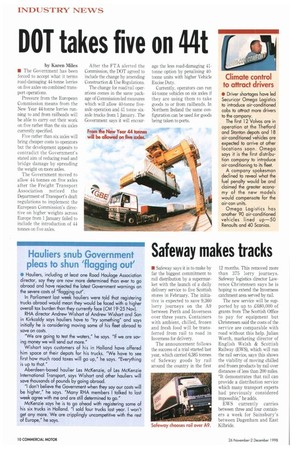DOT takes five on 44f
Page 12

If you've noticed an error in this article please click here to report it so we can fix it.
by Karen Miles • The Government has been forced to accept what it terms road-damaging 44-tonne lorries on five axles on combined transport operations.
Pressure from the European Commission means from the New Year 44-tonne lorries running to and from railheads will be able to carry out their work on five rather than the six axles currently specified.
Five rather than six axles will bring cheaper costs to operators but the development appeirs to contradict the Government's stated aim of reducing road and bridge damage by spreading the weight on more axles.
The Government moved to allow 44 tonnes on five axles after the Freight Transport Association noticed the Department of Transport's draft regulations to implement the European Commission's directive on higher weights across Europe from 1 January failed to include the introduction of 44 tonnes on five axles. After the FTA alerted the Commission, the DOT agreed to include the change by amending Construction & Use Regulations.
The change for road/rail operations comes in the same package of Commission-led measures which will allow 40-tonne fiveaxle operation and 41 tonne sixaxle trucks from 1 January. The Government says it will encour
age the less road-damaging 41tonne option by penalising 40tonne units with higher Vehicle Excise Duty.
Currently, operators can run 44-tonne vehicles on six axles if they are using them to take goods to or from railheads. In Northern Ireland the same configuration can be used for goods being taken to ports.




















































































































